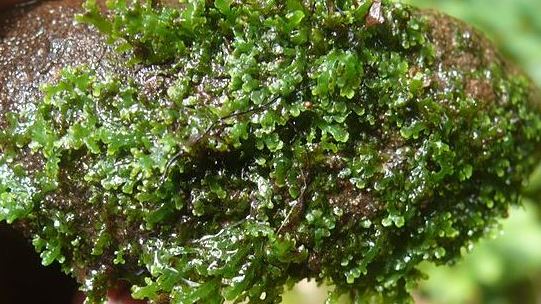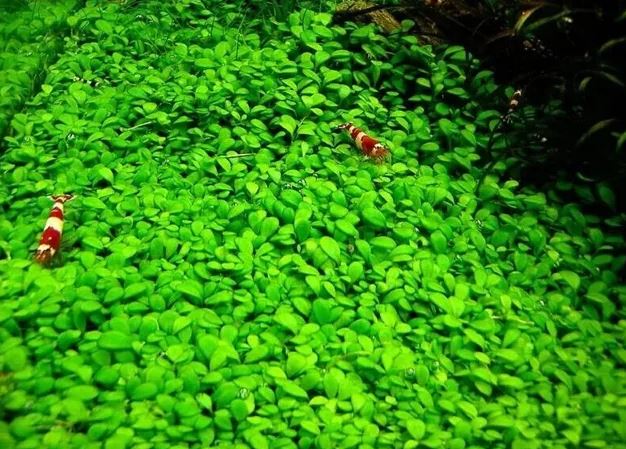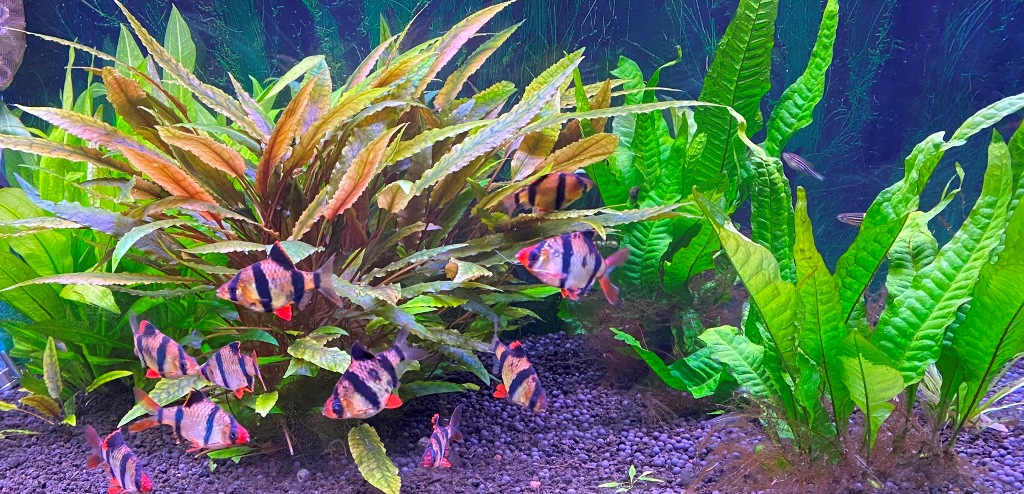Dying Aquarium Plants? 5 Expert Tips To Revive Them
Problems with aquarium plants are extremely common.
Aquarium plants can be a bit of a puzzle for many freshwater planted aquarium lovers. No matter how seasoned you are, plant problems are almost inevitable. Trust me, “Been there, experienced that.” I have experimented for years to try to get things right (see picture at the top of this page).
This article is the cumulation of what I’ve learned. The following is the most solutions that I’ve found effective in an effort to create a beautiful aquarium filled with healthy plants free of alge.
Tip #1: Adjust The Lighting
Increase or decrease the intensity of your aquarium lighting OR the adjust the amount of time the light is on.
* If your tank appears darker than the other tanks you see online then it’s time to upgrade your lighting. Good LED aquarium lights are inexpensive.
I would prefer to have a bright light that I have to reduce the amount of time it is on that a so so light.
Low light level problems are becoming rarer as LED lighting becomes cheaper and brighter than fluorescent bulbs. Either replace the fluorescent fixture you might have or buy a stronger LED lighting fixture.
* When choosing a new light fixture I like to make sure the light color is white rather than yellow or blue. Light color is measured in Kelvins (K). Yellow light will be around 2700K. You will see this in most room lights. Daylight / white light will be around 5500K. This is perfect for a planted aquarium. Blue light (like you see over reef tanks) may be 10,000K or more.
———————————————
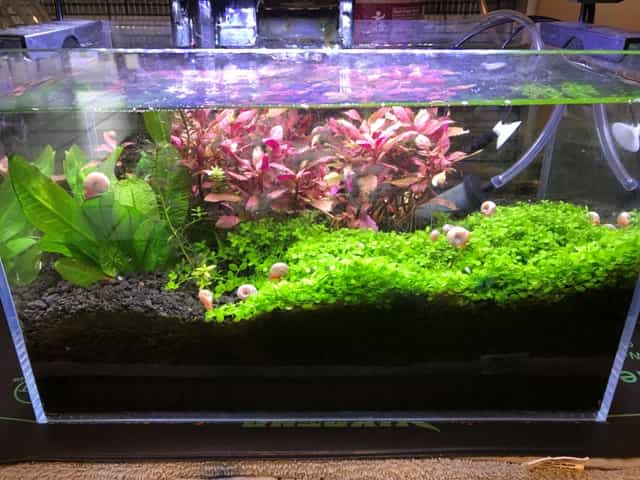
Above is the authors 2.8 gallon tank about 8 months after starting. The black hair algae will kill the red plant if left unchecked.
If you look at the red plants you’ll see black hair algae. This is possibly because I had increased the amount of time the aquarium light was on. I adjusted the timer to reduce the amount of time the light was on. If this didn’t correct the black hair algae issue, I would lower the amount of time the light was on. I’ve dealt with this before and that is what has worked for me.
Small Planted Aquariums Without CO2

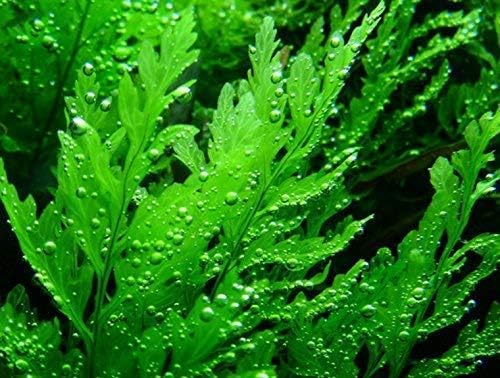
Tip #2: Check your substrate
There are a number of different substrates for your aquarium available online. What you decide on matters.
A substrate is a can be a rich source of natural plant nutrients. It also provides a “safe-space” for the growth of beneficial bacteria.
I prefer a thick layer of substrate in nano tanks so that the plants have enough substrate to grow into and hang on to.
Important Update ⇒ Filter pad as substrate.
December 27th, 2024: I used a koi pond filter pad as “substate” in my 75 gallon (see picture at the top of this page). I laid the pad on over the undergravel filter and then covered the paid with substate to hide it. This had two benefits: 1. It is much lighter than gravel 2. It provides an excellent medium for the plant roots to grab onto, much better than gravel alone.
Pictured below is my 2.8 gallon. Date unknown but probably 2021
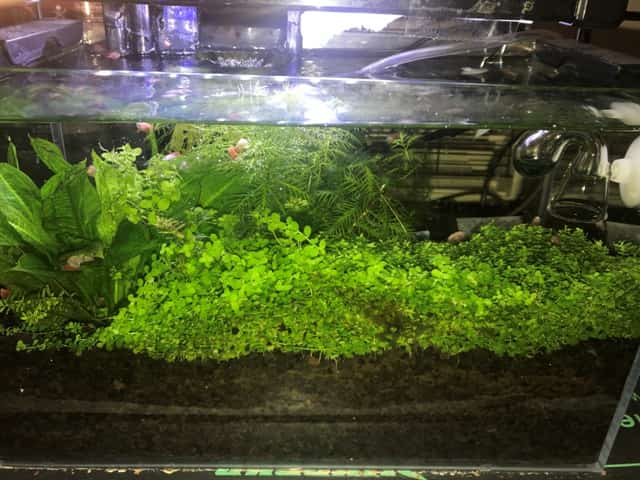
Update ⇒ Eco Complete substrate
December 27th, 2024 – Eco Compete seems to have plant nutrients added to the product. I don’t know this for sure, but it sure seems like it based on adding plants from and algae free tank to my newly setup tank that had Eco Complete as a substrate.
If you’re growing algae, this works well. If you want your plants to grow then you need something without nutrients added, like plain gravel.
Tip #3. Create a nutrient poor environment
I have learned that the aquarium water needs to be plant nutrient poor, otherwise algae growth will happen. I do 50% water changes with reverse osmosis water weekly to attempt to achieve this.

Keeping fish can be costly, but there's a great way to offset those expenses.
Consider creating your own website, just like I did with this one! I advertise Divi website creator, but you could place other ads on your website.
I've used Divi Wordpress website builder to build this site, and it's incredibly user-friendly. With its drag-and-drop interface, creating your own website becomes a breeze.
Simply tap this box to get started and see how easy it is to create a website with Divi.
The cost is $89/year. This is less than the cost of buying 3 discus fish. Divi comes with a 30-day money back-guarantee. Try it at no risk.
Take this box to visit the Divi website to learn more. The link opens in a new window.
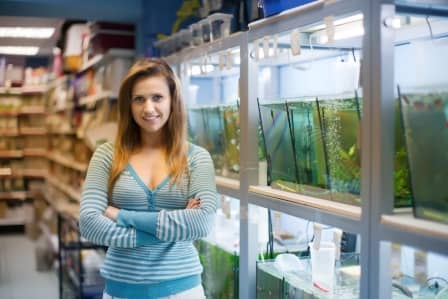
Video: How to place Divi onto your WordPress Website.
Video I made: How to easily create a homepage using Divi.
Tip #4. Increase the CO2 levels
Increase the CO2 in your aquarium either by no-tech (from the nitrogen cycle), low-tech (Use a DYI CO2 generator) or high-tech (pressurized CO2 canisters – my preferred choice).


How To Grow Lush Aquarium Carpeting Plants

Above: Authors low-tech CO2 generator
Above: Authors high-pressure CO2 set up.
Tip #5. Correct death by allelopathy
Allelopathy in the aquarium happens when a plant releases chemicals into the water that that inhibit the growth of nearby plants.
In aquariums that get large water changes weekly this is very uncommon.
In nature the chemicals are removed by water movement. In the aquarium with few water changes allelopathic chemicals build up and will eventually kill affected plants.
Often there’s no way to tell this is happening to a dying plant except to experiment. If the type of plant that is dying is important to you, buy another one of the same type and plant it where the dying plant was. If the new plant dies (but few or none of the other plants are affected) then you know that one or more of the other plants is releasing allelochemicals into the water and affecting your dying plant(s).
⇒ Fix: Do large weekly water changes to fix allelopathy.
Concentrating on these fixes will usually automatically lead to healthier plants.
Image below: The authors 10 gallon aquarium. Picture taken 12/12/2021
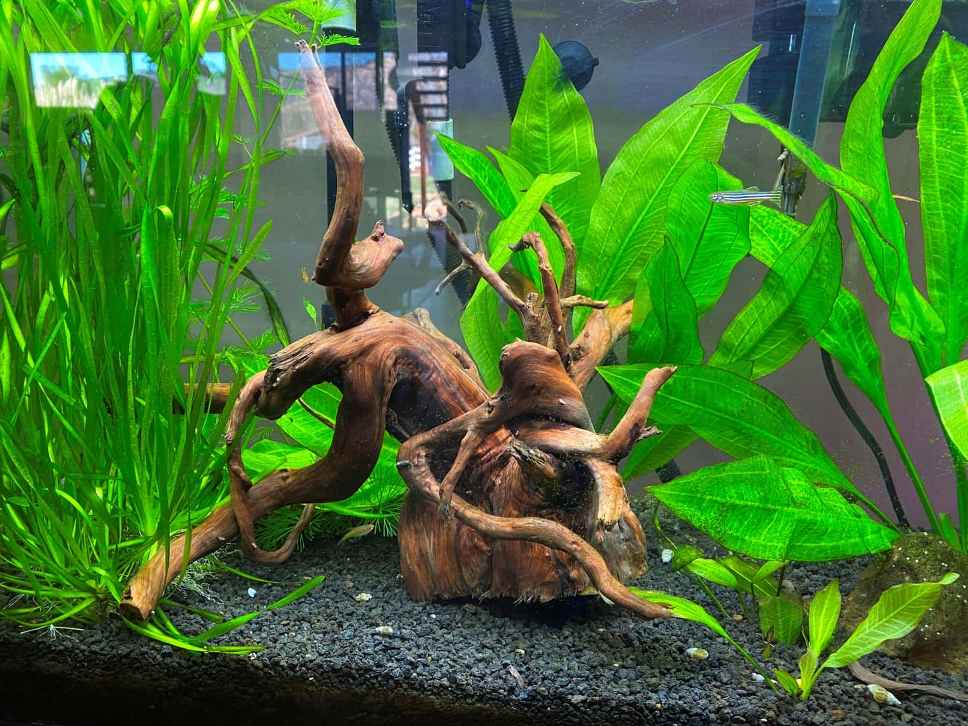
How I grow huge plants in my 75 gallon aquarium:

Authors 75 gallon plant aquarium. Picture taken late 2024.
Additional freshwater aquarium fish information:
Fishlore.com – 500 aquarium fish
Guide to caring for freshwater fish
Other pages on this site:
* Freshwater Aquarium Plants You Can Grow
* 11 Exquisite, Effortless Aquarium Plants That Totally Won't Outgrow Your Tiny Fish Tank
* Discus Fish: Because Regular Fish Just Aren't Enough of a Challenge
* Planted Nano Aquarium Magic: Tricking Your Plants Into Thinking They're Happy (CO2-Free Method)
* How to Train Your Oscars: Because Fish Totally Respond to Commands Like Dogs
* What size aquarium should you get?
Grow Beautiful Aquarium Plants Without Substrate
